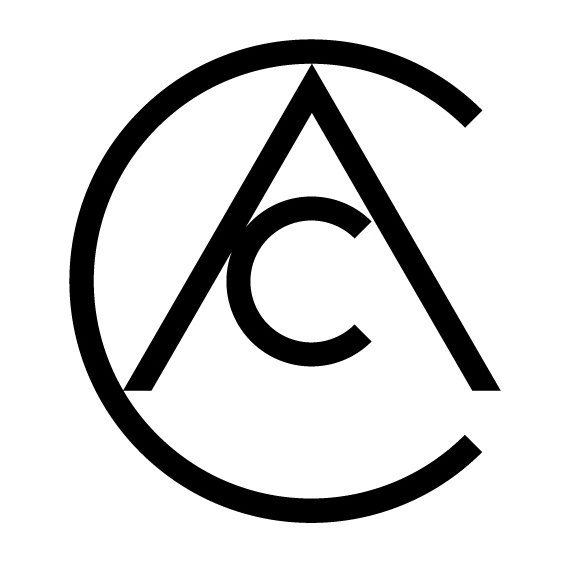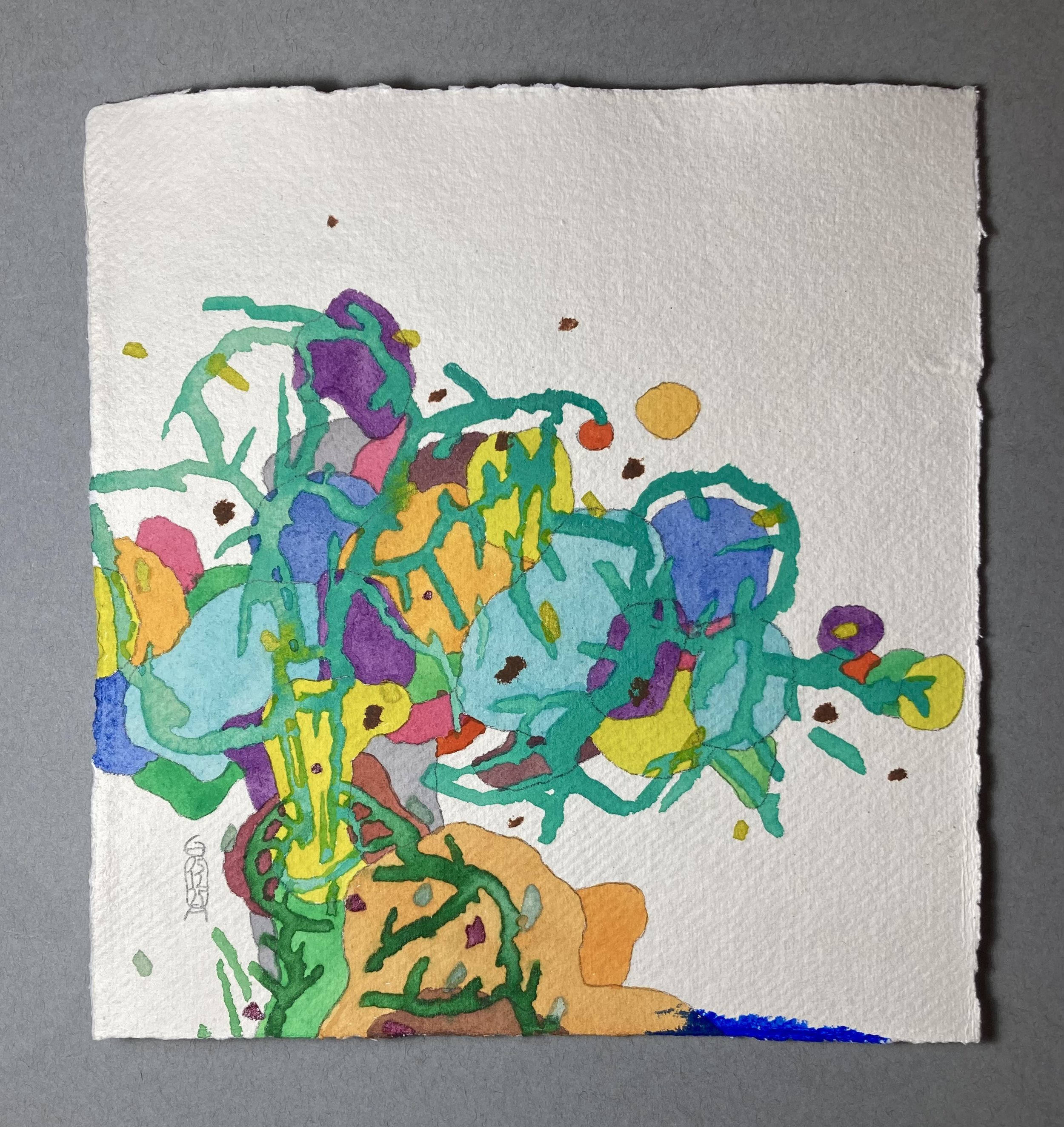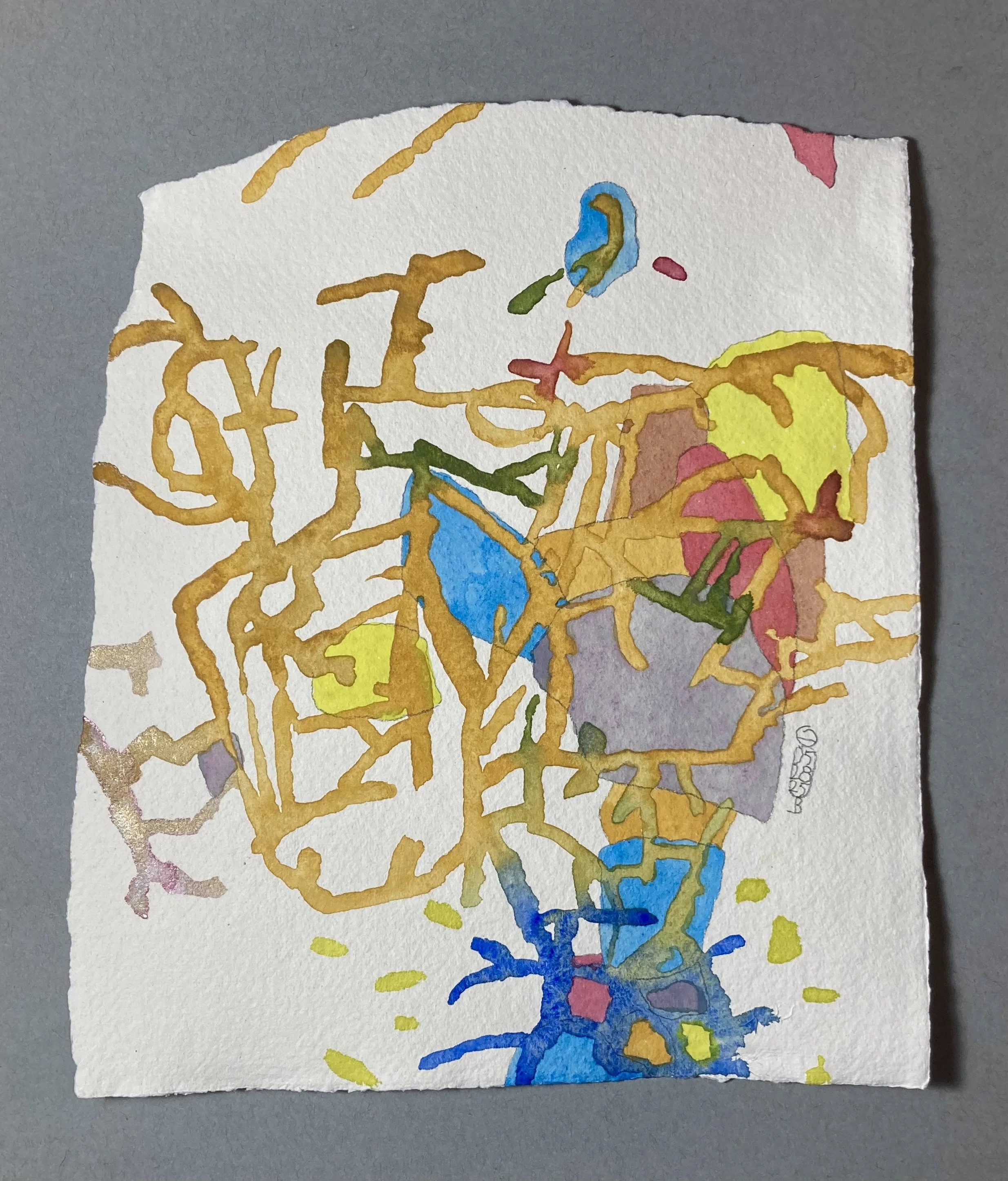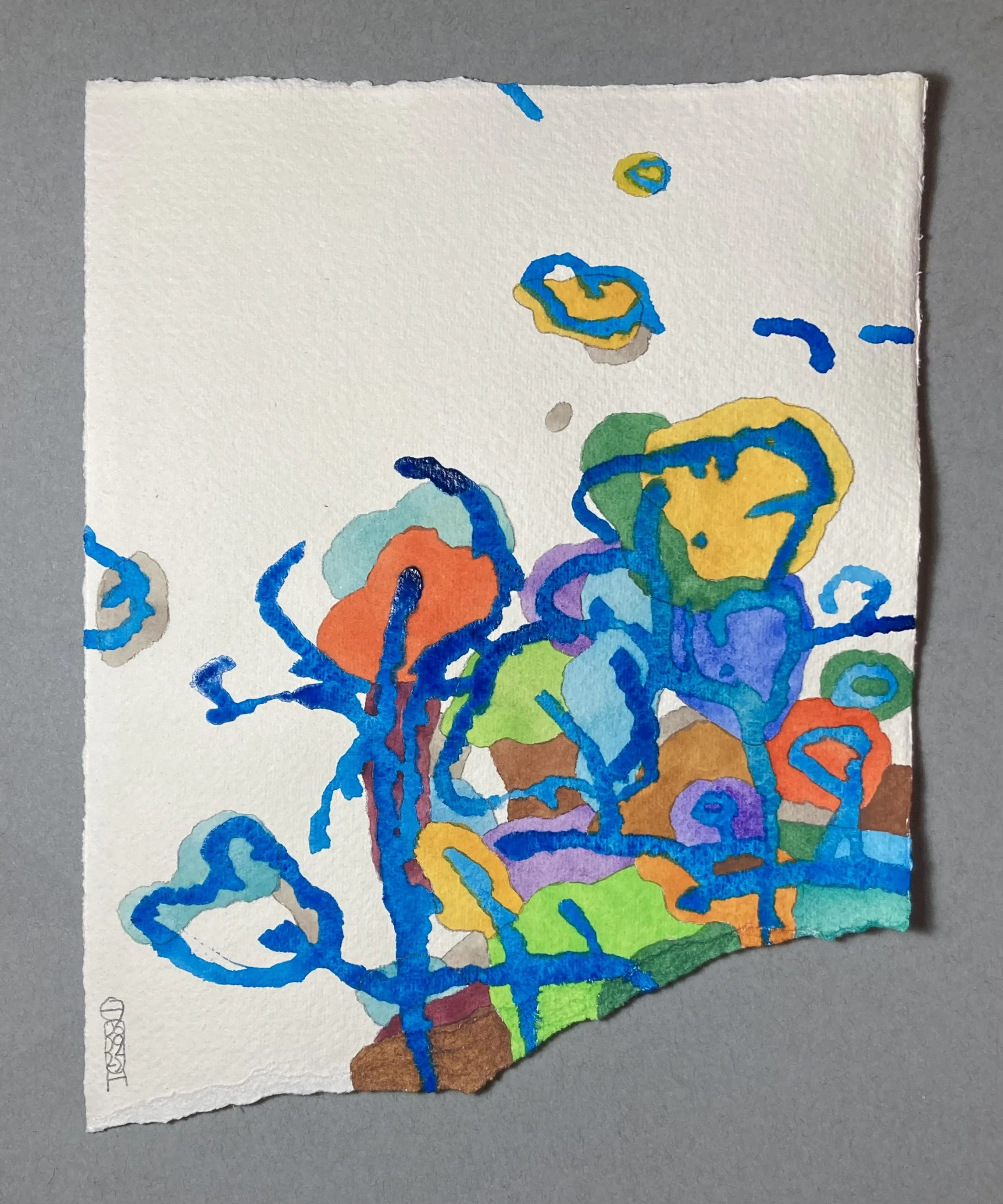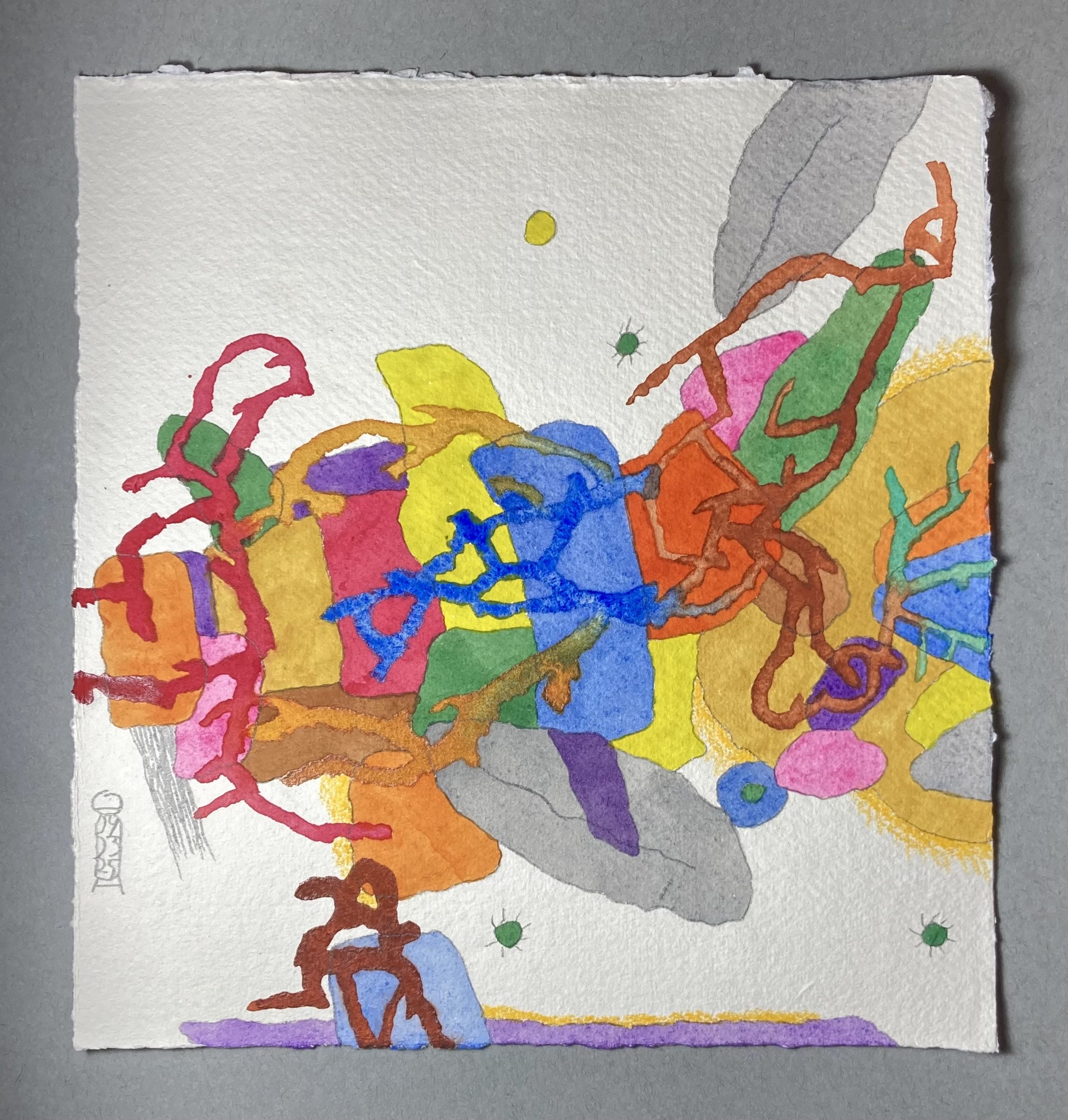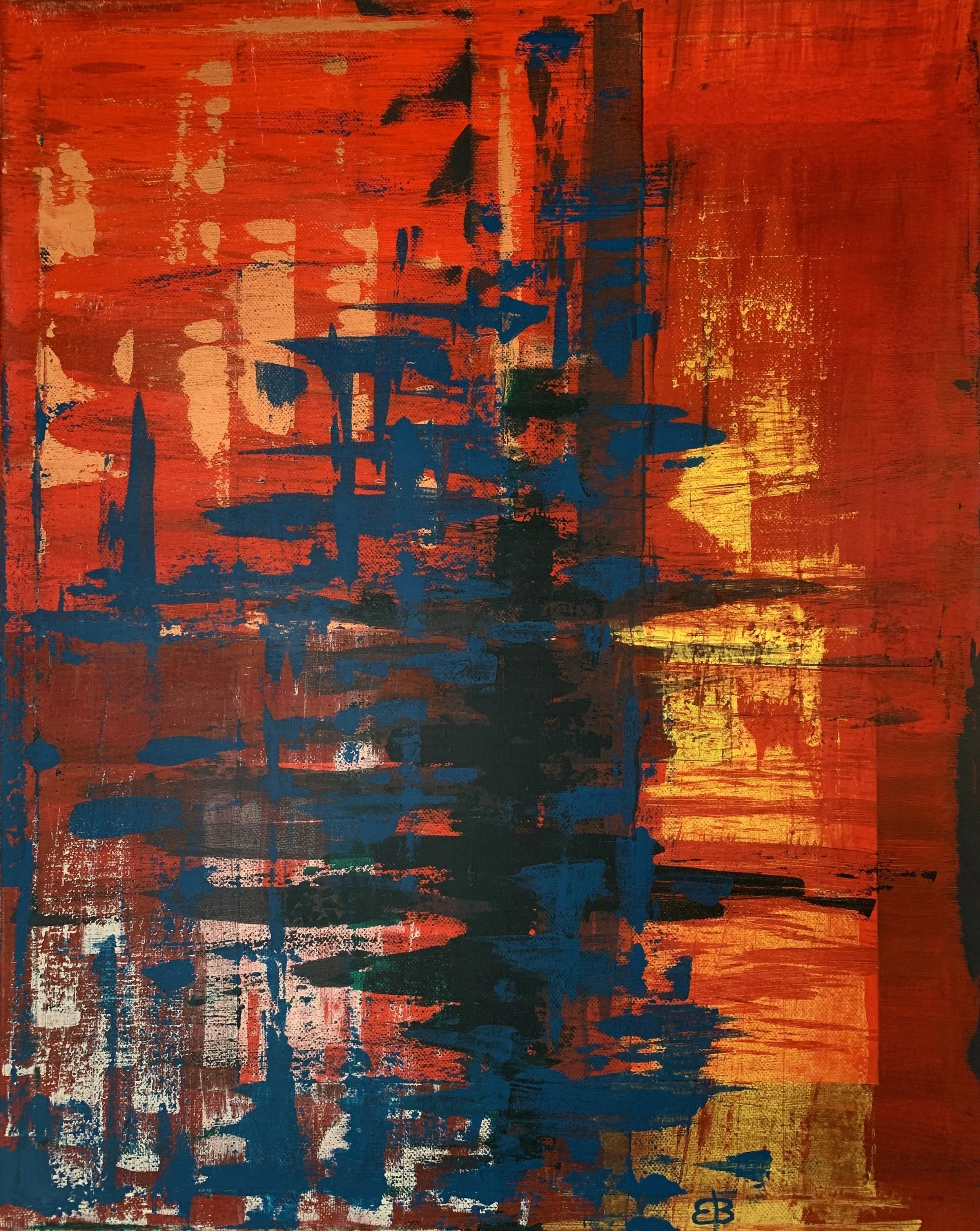Giora Carmi
gioracarmi.com
IntuitiveFlow.org
To enter the recent work of Giora Carmi is to stand before a practice that is, at once, playful and deeply metaphysical. His paintings, executed in watercolor, gouache, pencil, and other intimate mediums, are not simply images placed upon paper. They are meditations made visible. They unfold as maps of inner states, constellations of color and line that seem to trace both the subconscious and the act of becoming conscious.
Born in Israel in 1944, Giora Carmi carries with him the memory of a homeland marked by loss and survival, a cultural history that insists on resilience. From early childhood in Kfar Malal, through the profound absence of a father lost in war, to his later years in New York City, Carmi’s life has been shaped by both rupture and renewal. His career spans illustration, design, teaching, writing, art therapy, and painting, yet it is unified by one central drive: the desire to find and to give voice to the “home” of the self, that internal alignment which, for him, comes only in the act of creation.
To speak of Carmi’s work today is to situate him at a unique juncture in contemporary practice. His trajectory from illustrator of more than forty children’s books to art therapist and finally to painter of distilled abstractions is not a movement away from one field toward another, but rather a widening of scope. The childlike wonder of illustration, the psychological attentiveness of therapy, and the philosophical inquiry of Zen converge here, in images that refuse to be categorized as one thing or another.
Central to Carmi’s practice is what he calls “intuitive flow.” Unlike methodical construction, intuitive flow does not impose an image upon the page but allows the image to arise from within the act of making itself. In this way, the artist steps aside from the sovereignty of will and enters into a dialogue with line, pigment, and accident. His works are not depictions but processes: moments where the unconscious is allowed to leave its trace.
This philosophy aligns with his years of Zen study, with his insights into subconscious patterning, and with his conviction that the home we seek is not outside us, but within the act of creating. In this way, his work speaks less to the finished product than to the energy it carries—the alignment with beauty, as he calls it, that transforms hidden wounds into flowing form.
Among the most revealing aspects of Carmi’s recent practice is his experiment with tearing the paper into irregular shapes. At first glance, this seems like a small gesture—a format adjustment, a deviation from the conventions of square or rectangular sheets. Yet in Carmi’s hands, this modest act becomes a philosophical statement, an aesthetic confrontation with imperfection and disruption.
To tear the edge of the paper is to violate the comfortable boundaries of expectation. The clean rectangle, after all, carries with it the history of modernist purity, of the canvas as stable container. By disturbing this comfort, Carmi insists that the site of art is never secure. But where some would see disturbance as rupture, Carmi transforms it into an opening. The torn edge becomes not a wound but a threshold. It is precisely at this irregular boundary that beauty emerges, not despite disruption, but through it.
This approach echoes his own philosophy of intuitive flow: that which unsettles must not be resisted but welcomed, for only then can it be transfigured into form. The jagged edge, the deviation from geometric regularity, becomes emblematic of the larger human condition. Life itself tears the edges of our plans, of our identities, of our illusions of control. What Carmi demonstrates through his paintings is that these disturbances can be integrated, absorbed, and rearticulated into beauty.
The irregular sheet also alters the way the image itself functions. Rather than floating within a neutral container, the forms Carmi conjures seem to press outward, to meet the edge as though it were not a limit but an interlocutor. The torn boundary refuses invisibility. It insists on being part of the work. In this way, the irregular paper mirrors the psychic terrain Carmi explores: a field where disturbance is never hidden, never smoothed away, but allowed to stand as a necessary part of the whole.
In a time when art is often obsessed with polish and control, Carmi’s torn sheets carry an extraordinary lesson. They remind us that art is not about erasing what disturbs but about listening to it, integrating it, transforming it. His irregular papers are not mistakes corrected, but disturbances embraced. And in that embrace, they become radiant.
Each painting from the last five months, the period he has offered for reflection, feels like a discrete encounter with this philosophy.
As I am (2025) shows us a cluster of organic forms bound together by lines of gold and surrounded by vibrant patches of color. The work resists stability. It is not about likeness but about presence, about the insistence of being itself. The title underscores this: it is not “who I am” or “what I am,” but simply “as I am”—existence made manifest in color and gesture.
Does the whole world shine? (2025) expands this exploration, using lines of red and green to weave a lattice that bursts into fields of yellow and blue. The question of the title reverberates: Does the world shine? The answer, within the play of watercolor transparency and gouache solidity, is yes—not through representation of light, but through the radiance of the medium itself.
In the softer light (2025) operates in gentler tones, where blocks of color rest lightly within delicate lines. The sensation here is of pause, of breath, of intimacy. This is a quieter work, a meditation on stillness, where nothing presses but everything flows.
Myself (2025) is perhaps the most direct. The lines tighten, the colors cluster into forms that nearly cohere into figures, yet resist resolution. The self here is plural, fragmented, in flux. This is a radical statement: that identity cannot be captured but only traced in passing.
Power coming (2025), on the other hand, unleashes an almost electrical energy. The blues and pinks, cut through with oil crayon, vibrate across the page. Power is not depicted but felt, a surge of vitality that comes through the immediacy of mark-making.
Am (2025) and Be (2025) are a diptych in spirit if not in form, extending this inquiry into the grammar of existence. To “am” and to “be” are the simplest verbs, the foundations of presence, and in Carmi’s hands, they become abstractions of luminous simplicity. Lines twist and reconfigure, colors pool and disperse. Being itself becomes a visual act.
Changing constantly (2025) takes us into movement: bright hues and meandering lines that seem to dissolve as they are formed. The painting is a meditation on impermanence, a reminder that even as one looks, the self, the image, the world—all are changing.
Very clear (2025) inverts this with boldness. Here, clarity is not neatness but intensity, the courage of saturated color held within decisive lines. Clarity, in Carmi’s terms, is not the removal of complexity but the acceptance of it as beauty.
What is possible? (2025) returns us to inquiry. The title is both question and proposition, and the image mirrors this: fragments of forms, dispersed across the page, suggest that possibility lies in the openness of becoming.
Carmi’s language is dual: line and color. The line, often metallic or bold, provides the skeletal structure. It twists, overlaps, and entangles, suggesting figures, architectures, and growths, without settling into any one. The color, translucent or opaque, fills and resists these lines, creating fields of contrast and harmony. Together, they operate like syntax and vocabulary: the line is the grammar, the color the words.
In this, Carmi recalls the work of Paul Klee, the singular comparison his oeuvre invites. Like Klee, Carmi treats line not as contour but as a living force, a gesture that dances across the page. Like Klee, he embraces color as resonance rather than description. Yet where Klee often reached toward the playful or the symbolic, Carmi’s works are more meditative, more attuned to the interior as a site of transformation.
Within the contemporary art scene, Carmi occupies a vital position. At a time when much abstraction tends toward the monumental, the digital, or the ironic, his intimate watercolors insist on presence, on touch, on sincerity. They return us to the scale of the hand, the body, the breath. His art matters because it resists spectacle and demands attention, not through grandiosity but through quiet resonance.
More than that, his works insist on the social role of art as a transformation. By aligning creation with healing, Carmi reminds us that art is not simply an object for the market but an act that can change perception, dissolve wounds, and align the self with beauty. This is a radical stance, one that positions him not only as an artist but as a guide, a witness to art’s power as a language of truth.
To celebrate Giora Carmi is to celebrate not only the works he produces but the vision they embody. His paintings, small in scale but vast in resonance, open a space where subconscious patterns can be transformed into beauty, where disturbance can become harmony, where the very act of being is celebrated as art.
In a world of fracture and distraction, Carmi offers coherence, not the coherence of imposed order but of lived flow, of beauty arising out of imperfection. His works remind us that home is not a place but an act, not a product but a process. Home is found in the alignment with our sense of beauty, in the courage to follow intuition, and in the trust that from the source of existence, each of us may bring forth a unique expression.
In this lies the importance of Giora Carmi for contemporary art and for society. He offers not only paintings but a philosophy, not only images but a practice of transformation. Like Klee before him, he has shown that art can be both playful and profound, both intimate and universal. But unlike any before him, Carmi speaks in the language of intuitive flow, a language that is at once ancient and utterly of this moment.
These recent works mark not an endpoint but a beginning, the flowering of a mature practice that will continue to evolve. They testify to an artist at home in his process, yet restless in inquiry, always asking: What is possible? Does the whole world shine? In the resonance of his colors, the answer is always yes.
And perhaps this is where Carmi’s lasting contribution resides: in reminding us that art is not about solving, not about fixing, not about explaining, but about entering the state of being itself. His torn edges, his luminous colors, his intricate lines all speak to the possibility of transformation, of turning what unsettles into beauty, of allowing imperfection to be radiant. For those who encounter his works, the invitation is clear: to step into that same flow, to align with one’s own sense of beauty, and to discover, through art, a home that has been waiting all along.
By Marta Puig
Editor Contemporary Art Curator Magazine
Power coming, 2025, Watercolor + gouache + pencil + oil crayon, 22 x 21 cm
Am, 2025, Watercolor + gouache + pencil, 26 x 22 cm.
Myself, 2025, Watercolor + gouache + pencil + colored pencil, 23.5 x 20.5 cm
Changing constantly, 2025, Watercolor + gouache + pencil, 26 x 21 cm
Does the whole world shine?, 2025, Watercolor + gouache + pencil, 22.5 x 21 cm
Very clear, 2025, Watercolor + gouache + pencil, 23 x 21 cm
What is possible?, 2025, Watercolor + gouache + pencil, 23 x 21 cm
In the softer light, 2025, Watercolor + gouache + pencil, 23 x 21 cm
Be, 2025, Watercolor + gouache + pencil + color pencil, 22.5 x 21 cm
As I am, 2025, Watercolor + gouache + pencil, 22.5 x 21 cm
